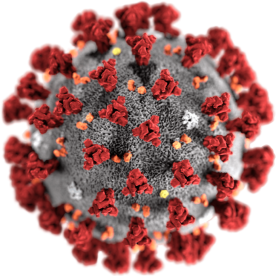ICS Section Programming at MLA 2014. Mark the date and time on your calendar! It is Monday, May 19 from 10:30-12:00.
ICS section programming: M-Health and Information Innovations: Making an Impact in Global Health (#16)
Cosponsors: Public Health/Health Administration Section, Educational Media and Technologies Section
Description: According to the National Institutes of Health (NIH) Consensus Group, “mHealth is the use of mobile and wireless devices to improve health outcomes, healthcare services and health research.” The innovative use of mobile resources, information tools, and information technologies continues to change the face of health care research and practice in the United States and around the world. As information professionals, we have identified and acted on opportunities to impact health care outcomes and to empower communities around the globe. This session will highlight the successful application of mobile resources and innovative information tools to improve and enhance health care in underserved or resource-poor settings around the world and in the United States.
Download a PDF of ICS programming at MLA 2014 here.
1. Contributed paper presentation
Title: Unfettered and Untethered: Internet access in the hands of under connected community based organizations
Presenter: John Bramble, Technology Coordinator, Eccles Health Sciences Library, University of Utah
Co-authors: Rachel Vukas, Kansas/Technology Coordinator, University of Kansas Medical Center
Dana Abbey, Health Information Literacy Coordinator, University of Colorado Anschutz Medical Library
Barbara Jones, Missouri Outreach and Advocacy Coordinator, University of Missouri – Columbia
Monica Rogers, Health Information Literacy Coordinator, Creighton University Health Sciences Library
Objectives: This paper describes what happens to the quality and impact on outreach efforts conducted by health focused community based organizations serving at-risk populations when their outreach staff are provided with Apple iPad2s with unlimited cellular data-plans along with intensive training by health sciences librarians on quality online health information resources and on the use of the Apple iPad2.
Methods: The project worked with six CBOs covering a wide geographic area. CBOs participating in this project needed to meet certain criteria. They need to: have a health education focus; have underserved/at-risk populations as primary clientele; conduct outreach or in-home services; have a single point of contact who was also the person conducting the fieldwork; did not have the resources to access the internet while in the field; be willing to participate in intensive training on quality health information/use of the Apple iPad2; and be willing to regularly report on their activities using an online form (Survey Monkey). The questions in the online report form were created to elicit responses from the CBOs on how their outreach efforts were impacted by participating in the project. Patterns from the report submissions were identified, coded, and the data from the coding were analyzed.
2. Invited presentation
Title: Capacity Building and Sustainability: The Role of Mobile Apps
Presenter: Elizabeth Norton, Disaster Information Management Research Center, National Library of Medicine
Lack of access to technology and digital information resources in limited or austere conditions hampers the ability of disaster health professionals to prepare for, respond to and recover from events affecting their communities or those requiring outside assistance. Internet-independent information tools that can be carried into the field are an important part of the well-equipped “digital go-bag”. The availability of these resources can serve to level the playing field and help communities build the capacity to help themselves.
The number and type of mobile tools and apps is overwhelming. Many apps are not relevant, not supported by authoritative sources, and not usable when the Internet is unavailable. How do you get just what you need just in time? The National Library of Medicine (NLM) Disaster Information Management Research Center has developed a suite of disaster apps and has sorted through the myriad of other disaster-related apps to identify the most credible and useful. It is important for communities to know how to get reliable information not only when, but where they need it.
The NLM also supports capacity building and sustainability in local communities through collaborations, providing funding, and sharing expertise and technology. Recognizing the high vulnerability in Latin America to natural disasters, the Library has been assisting in the development of disaster information centers across that region. M-health tools, including mobile apps, are now an important part of these disaster information centers. Part of these efforts have included support for the Latin America disaster information centers to create their own apps that help them meet their unique information needs.
3. Invited presentation
Title: From one small satellite to gadgets galore: what’s health got to do with it?
Presenter: Julia Royall, Global Health Consultant
“It is true that technological progress in modern times has linked men together like a complex nervous system. The means of travel are numerous and communication is instantaneous – we are joined together like the cells of a single body, but this body as yet has no soul. This organism is not yet aware of its unity as a whole.” ? Antoine de Saint-Exupéry, Wartime Writings 1939-1944
mHealth is all the rage! Especially on the African continent. Gizmos which measure and communicate. Information. Fast. Does the community health worker want another piece of technology or a bicycle? Are they even at the table in this critical discussion? And what difference in morbidity and mortality do these inventions enable their users to make?
But let’s back up a bit. 23 years ago, our aim in this very session was to create a library partnership program bringing together librarians in North and South in a kind of ad hoc delivery system for full text medical journal articles. Delivery was by any means possible – sometimes by fax or diplomatic pouch, more often by postal service. Unless it was converted to ascii text, one fulltext article could barely fit on HealthNet, the small satellite in a low orbit around the earth. But it was a beginning. Librarians in subSaharan Africa were the heroes as they downloaded HealthNet News (which would fit) and distributed it by hand. Librarians, especially our courageous colleagues in Africa, have been and continue to be the foundation and immutable force in the finding, organizing, and using of health information and in leveling the playing field.
What is mHealth? What does it comprise? Is it “agnostic” or should it inform an endpoint?
In this session, we will look at two particular examples:
A case study of Ugandan medical students work in and with a village in gathering data on actual use of insecticide treated bed nets using a digital pen.
How plain vanilla connectivity brings African malaria researchers into the international scientific community – they invent the rest.
4. “Mini” Open Forum: mHealth and Innovation
A discussion with presenter panel and participants
This will provide a time for the presenter panel members and participants to share further experiences on the use of mHealth and technology in improving health outcomes and empowerment in low-resource communities. This will also provide an opportunity for participants to discuss mHealth, ask questions, share personal experiences and consider opportunities for future involvement.




